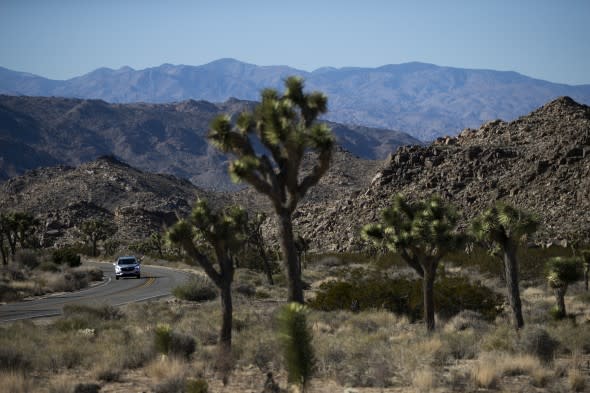National Park Service assesses damage to parks as threat of another shutdown looms
The longest government shutdown in United States history took a toll on the country's national parks in more ways than one.
Whether it was physical damage inflicted by unruly guests, park service employees not receiving their paychecks for several weeks, local businesses losing money or impacts to wildlife, recovery will take time.
"The damage done to our parks will be felt for weeks, months or even years," Theresa Pierno, president and CEO for National Parks Conservation Association said after the shutdown ended. "We want to thank and acknowledge the men and women who have devoted their careers to protecting our national parks and will be working hard to fix damage and get programs and projects back up and running."
"We implore lawmakers to use this time to come to a long-term funding agreement and avoid another disaster like this. Federal employees, businesses, communities and national parks deserve better."
The parks stayed open during the shutdown, operating only with a very limited staff. Others were forced to close at times due to snowy weather that caused road conditions to become dangerous as plowing operations were not funded.
The shutdown began Dec. 23 and ended on Jan. 25, but the bill President Trump signed only reopened the government for three weeks.

In this Jan. 10, 2019, file photo, a car drives along the road at Joshua Tree National Park in Southern California's Mojave Desert. National parks across the United States are scrambling to clean up and repair damage that visitors and storms caused during the recent government shutdown while bracing for the possibility of another closure later this month. (AP Photo/Jae C. Hong, File)
Some of the worst damage was reported at Joshua Tree National Park in Southern California. Illegal off-roading activity was reported, which caused damage to sensitive desert soils, according to the Associated Press.
George Land, public information officer for Joshua Tree, told AccuWeather for the most part the park staff has a handle on what occurred in the 800,000-plus acre park during the shutdown. While he said things were "pretty chaotic" initially, things never got to the point where it became the "Wild West" as some media reports made it seem.
He said over 100 fires were set during this time and the park "dodged a bullet" because Joshua Tree sits in a very windy location and no wildfires developed.
One of the famed trees was also reportedly toppled by an off-road vehicle. Joshua Trees are slow growing and can grow an inch to an inch and a half per year. Some have lifespans over 150 years.
At Point Reyes National Seashore in Northern California, with no park officials around, elephant seals congregated in areas where tourists normally walk, including a ramp near the visitor center as well as the parking lot.
Upon reopening, park officials at Rocky Mountain National Park in Colorado said there was illegal activity on park grounds during the shutdown, but the impacts weren't as damaging as in other locations.
"Compared to what some other national park sites experienced in resource damage and illegal activity, we were fortunate that the majority of visitors to Rocky Mountain National Park were remarkable stewards during the shutdown, some going above and beyond in their support and care for their beloved national park," officials said.
Staff members at Death Valley National Park have spent over 1,500 hours documenting, cleaning and repairing damage incurred during the shutdown, officials said in a statement.
"Park staff are still assessing the government shutdown's impacts, but preliminary reports of human waste, trash, vandalism, and impacts to wildlife are disturbing," they said.

This January 2019 photo provided by the U.S. National Park Service shows vehicle tracks in an area that is home to rare and endangered plants and animals in Death Valley National Park, Calif. National parks across the United States are scrambling to clean up and repair damage caused by visitors and storms during the government shutdown while bracing for another possible closure. (National Park Service via AP)
The shutdown occurred during the holiday season, which is the busiest period of the year for visitation to Death Valley.
"People tried to do the right thing by leaving trash next to full dumpsters, but wind and animals dispersed it," park superintendent Mike Reynolds said in statement. "The park's resources, visitors and wildlife all paid the price."
"Park rangers have noticed three coyotes and two bobcats approaching humans for food recently. We think their behavior was changed by the food scraps they got from trash," said Reynolds.
While the threat for another shutdown looms on Feb.15, Land said staff members are glad to be back at work. He added that if there were to be another shutdown, there's not a lot employees can do to prepare other than continue to go about their daily tasks.
"We work in a park, there's a lot of gigs that are a lot worse than working in a national park," he said. "Everybody's glad to be back; we're going about the business of protecting the park and all the people that come from, really, all over the world to enjoy the beauty and solitude that Joshua Tree offers."

